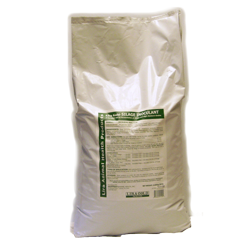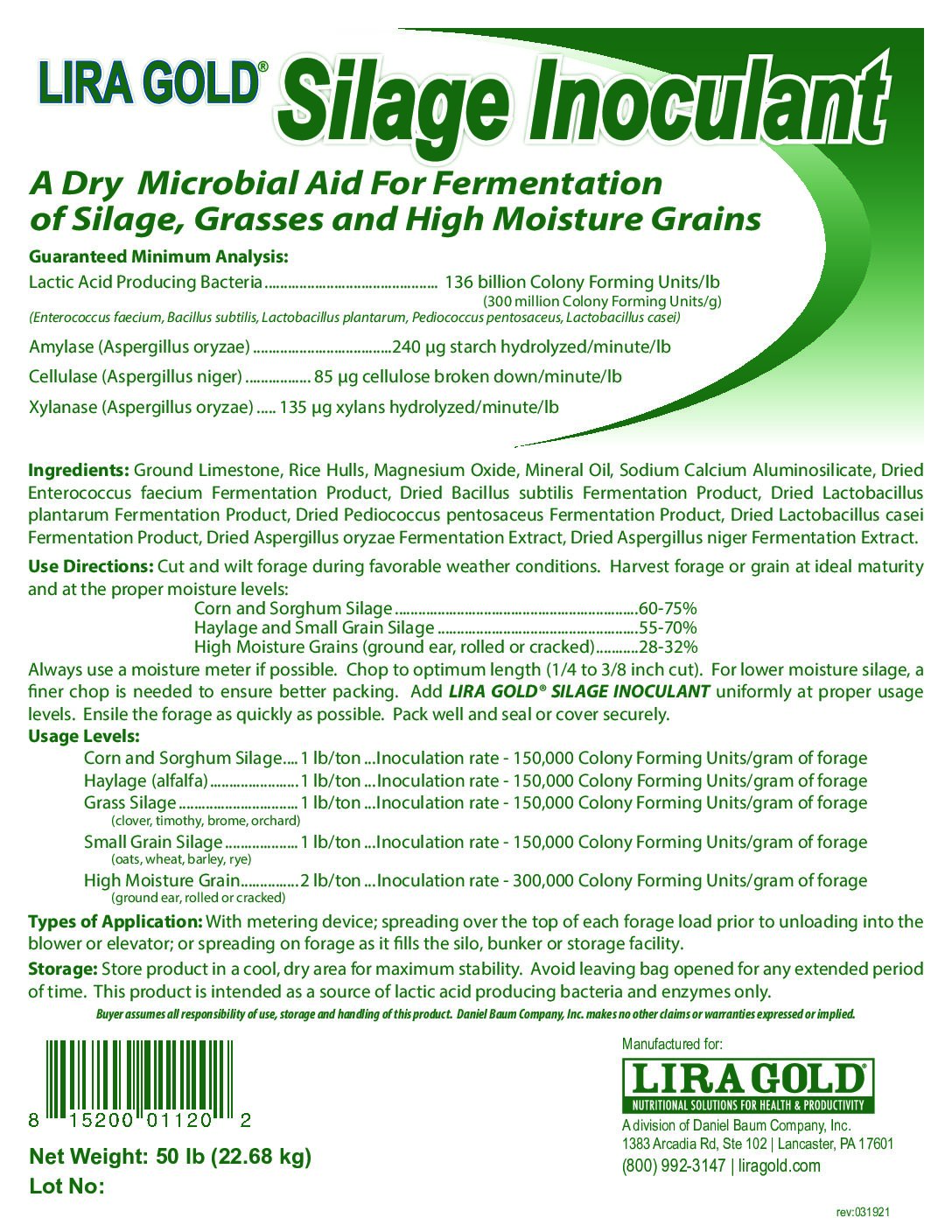Product Details
Putting up next year’s feed is serious business! We have carefully selected an effective array of amylase, cellulase and hemicellulase enzymes necessary to break down plant constituents that aid in the speed and completeness of fermentation. Furthermore, LIRA GOLD Dry Silage Inoculant has specifically chosen bacterial species and strains that have proven valuable in crop fermentation!
The results are (1) less nutrient loss, (2) lower fermentation temperature, (3) more digestible feedstuffs, and (4) increased nutrient availability.
Recognizing that growers have choices and truly want the most value for their money, we have developed both forms of our silage inoculant to provide ensiled feedstuffs that are consistent, effective, affordable, and have the potential to generate the greatest profit.
Your Questions Answered
Ground Limestone, Rice Hulls, Magnesium Oxide, Mineral Oil, Sodium Calcium Aluminosilicate, Dried Enterococcus faecium Fermentation Product, Dried Bacillus subtilis Fermentation Product, Dried Lactobacillus plantarum Fermentation Product, Dried Pediococcus pentosaceus Fermentation Product, Dried Lactobacillus casei Fermentation Product, Dried Aspergillus oryzae Fermentation Extract, Dried Aspergillus niger Fermentation Extract.
Cut and wilt forage during favorable weather conditions. Harvest forage or grain at ideal maturity and at the proper moisture levels:
| Corn and Sorghum Silage | 60-75% |
| Haylage and Small Grain Silage | 55-70% |
| High Moisture Grains (ground ear, rolled or cracked) | 28-32% |
Always use a moisture meter if possible. Chop to optimum length (1/4 to 3/8 inch cut). For lower moisture silage, a finer chop is needed to ensure better packing. Add LIRA GOLD® Dry Silage Inoculant uniformly at proper usage levels. Ensile the forage as quickly as possible. Pack well and seal or cover securely.
Usage Levels:
| Inoculation Rate | ||
| Corn and Sorghum Silage | 1 lb/ton | 150,000 CFU*/g of forage |
| Haylage (alfalfa) | 1 lb/ton | 150,000 CFU/g of forage |
| Grass Silage (clover, timothy, brome, orchard) | 1 lb/ton | 150,000 CFU/g of forage |
| Small Grain Silage (oats, wheat, barley, rye) | 1 lb/ton | 150,000 CFU/g of forage |
| High Moisture Grain (ground ear, rolled or cracked) | 2 lb/ton | 300,000 CFU/g of forage |
*CFU=Colony Forming Units
Types of Application: With metering device; spreading over the top of each forage load prior to unloading into the blower or elevator; or spreading on forage as it fills the silo, bunker or storage facility.
Storage: Store product in a cool, dry area for maximum stability. Avoid leaving bag opened for any extended period of time. This product is intended as a source of lactic acid producing bacteria and enzymes only.
Lactic Acid Producing Bacteria: 136 billion Colony Forming Units/lb (300 million Colony Forming Units/g)
(Enterococcus faecium, Bacillus subtilis, Lactobacillus plantarum, Pediococcus pentosaceus, Lactobacillus casei)
| Amylase (Aspergillus oryzae) | 240 μg starch hydrolyzed/minute/lb |
| Cellulase (Aspergillus niger) | 85 μg cellulose broken down/minute/lb |
| Xylanase (Aspergillus oryzae) | 135 μg xylanase hydrolyzed/minute/lb |



Reviews
There are no reviews yet.